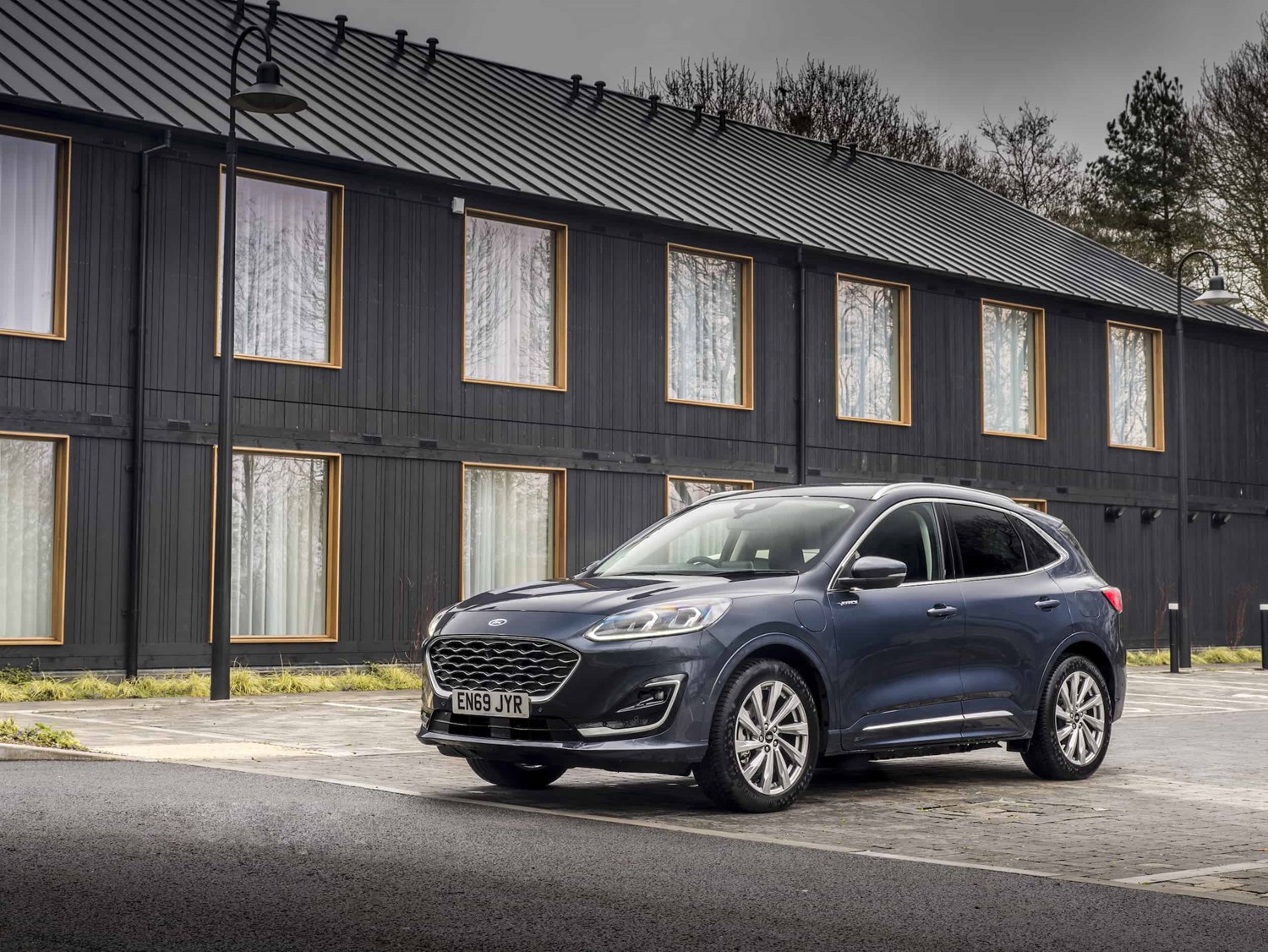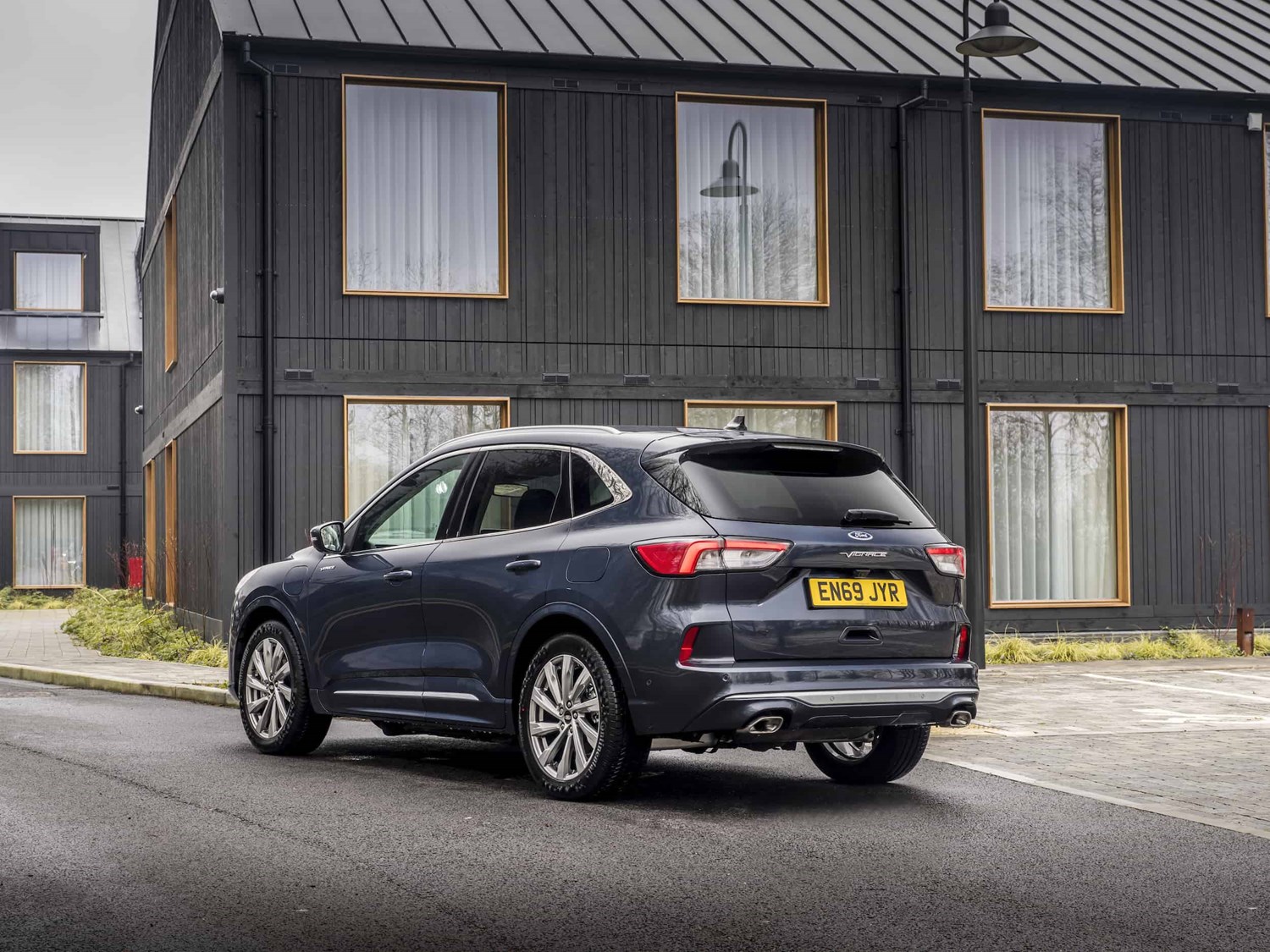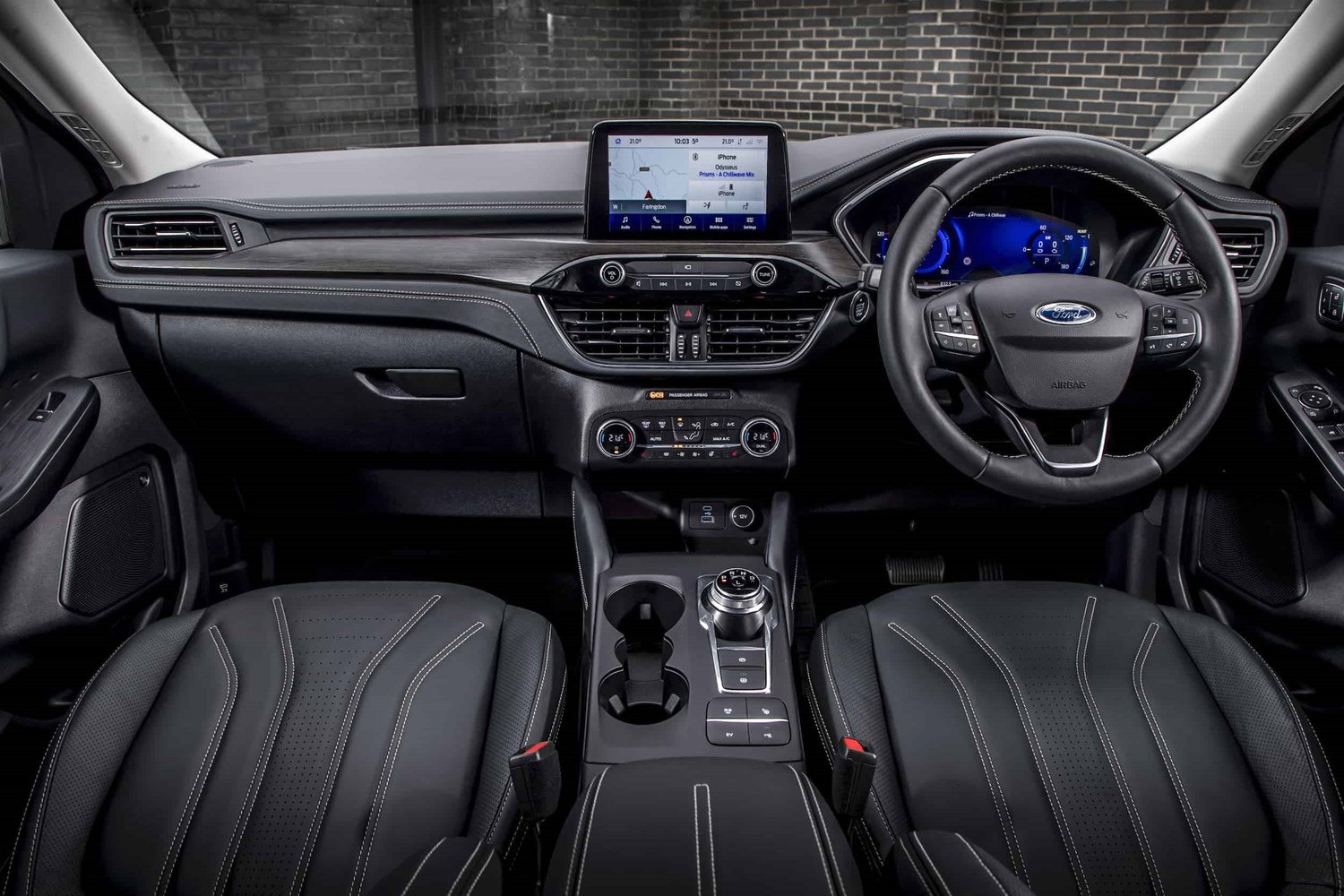Looks and image
Throughout the generations the Kuga has always been one of the better-looking crossovers - having a sleek design and hiding its bulky size well. Even first generation models still look the part and on the second-generation model, it’s worth searching for a sporty ST-Line version, as these look cool with their sportier styling kit.
But this new Kuga is arguably the best-looking yet, with a much sleeker appearance than its predecessors, while it ditches plenty of the cheap-looking plastic cladding that seems to be a trademark on cars like these. It’s perhaps not as bold as other models in this class, but that’s no bad thing as it still looks the part. You can also opt for a sporty ST-Line grade or a more upmarket Vignale grade for revised styling.
The interior also feels more modern, too, thanks to the more prominent touchscreen and de-cluttered layout, and this was the area where the previous-generation Kuga was really beginning to show its age. It also feels well-built, and there’s generally high-quality materials used throughout. The only slight gripe is that even a £40,000 Kuga has a cabin layout mirroring that of a £16,000 Fiesta, which might be a bit disappointing when you’ve stumped up that kind of cash.
The Kuga also impresses behind the wheel, and feels more agile than you might expect from a high-riding crossover. While not as fun to drive as the Focus that it’s based on, it’s still more involving than plenty of rivals. This sportier stance does lead it to have a firmer ride than some of the competition – exaggerated on high-spec ST-Line X and Vignale trim levels with their 19-inch alloy wheels.
Space and practicality
Also key to the Kuga is its impressive practicality, and it comes with brilliant sliding rear seats that allow you to flick between having a larger boot or more rear legroom. It’s not quite the largest car in this class, with it having 475 litres of luggage space as standard, which increases to 526 litres with the seats moved forward. Folding the seats down increases the room on offer to 1,544 litres. It’s worth noting that the plug-in hybrid is marginally less practical, but not massively so.
Cabin space is also generous, with even taller adults likely to have no grumbles when it comes to the room on offer. If you’re considering the Kuga because the Focus is just that bit too small, this crossover is more than ideal.
Standard equipment includes autonomous emergency braking and lane-keep assist, though it’s disappointing that even flagship versions don’t come with equipment such as blind spot monitoring and adaptive cruise control without venturing onto the options list.
Engines
The Kuga is available with a seriously impressive line-up of engines – including petrol, diesel, mild-hybrid diesel and plug-in hybrid options. It really feels like there is something for everyone.
The engine line-up kicks off with a 1.5-litre EcoBoost petrol unit, which is available with either 118bhp or 148bhp, with a six-speed manual gearbox coming with both. It’s worth stumping up for the more powerful option as the 118bhp version is a bit underpowered – taking 11.4 seconds to accelerate to 60mph next to the 9.5 seconds of the more powerful option.
Though Ford no longer offers new diesels on the Kuga (as of late 2021), these models used to be offered, with the line-up starting with a 118bhp 1.5-litre diesel, which comes with either a six-speed manual or eight-speed automatic gearbox. Following this is a 148bhp mild-hybrid 2.0-litre diesel, which is mated to a six-speed manual gearbox. The quickest engine to power the Kuga in the line-up is the 187bhp 2.0-litre diesel, which comes with an eight-speed automatic gearbox and all-wheel-drive – allowing it to accelerate to 60mph in 8.5 seconds. This engine is the only one to come with all-wheel-drive, too, with the rest of the range being front-wheel-drive.
Next up is the standard hybrid model, which Ford labels as a ‘FHEV’. Using a 2.5-litre petrol engine combined with an electric motor, it produces 187bhp in all. A CVT automatic gearbox is also used, with 0-60mph taking 8.9 seconds.
Last but not least is the plug-in hybrid, which mates the same 2.5-litre petrol engine with a more powerful electric motor and larger 14.1kWh battery – producing 222bhp in total, which allows for a 0-60mph time of nine seconds. It utilises a CVT automatic gearbox, which allows for an electric range of 35 miles, and some especially low running costs, which we’ll get onto later…


